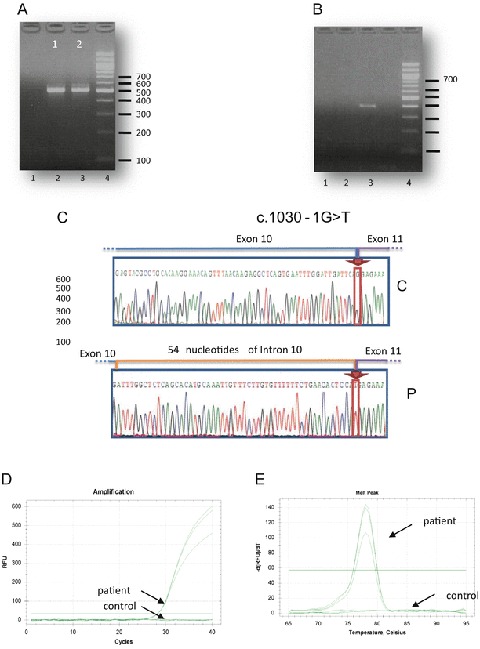Fig. 2.

Characterization of the mutation NM_014049.4: c.1030-1G>T in the intron 10 of the ACAD9 gene. (a) Amplification of the ACAD9 transcript using a forward primer within exon 10 and a reverse primer within exon 15. Lane 1 control; Lane 2 patient; Lane 3 DNA 100-bp increment ladder. The amplification showed 509 and 563 bp products in the patient sample while only the 509 bp product was present in the control DNA sample. (b) Amplification of the ACAD9 transcript using a forward primer within the putative inserted intronic sequence and a reverse primer within exon 15. Lane 1 control; Lane 2 patient; Lane 3: DNA 100-bp increment ladder. The corresponding fragment (448 bp) was amplified using patient sample while no amplification was obtained with control sample. (c) Sequence of the 563 bp PCR product showing the 54 intronic nucleotide in the patient DNA sample. C control, P patient. (d) qPCR amplification of ACAD9 cDNA in proband and control fibroblasts. No amplification was observed with control sample. (e) Dissociation curves for ACAD9 qPCR. A single dissociation temperature suggests a single product
